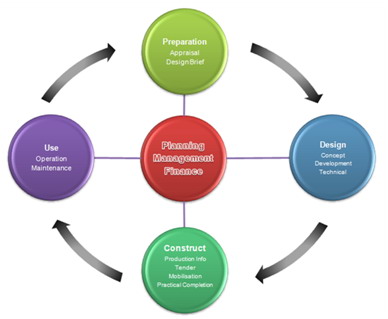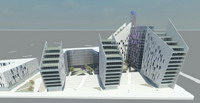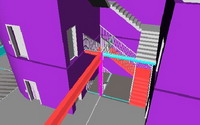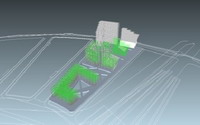BIM, a Reality for AEC
Building information modelling (BIM) continues to streamline the AEC industry with developments across the design, construction and operations sectors. The amalgamation of technologies, processes, and people is recognised as the core elements that will drive future workstreams and collaboration across disciplines and organisations. The realisation of this in America has witnessed organisations such as the Texas Facilities Commission insisting on building projects being delivered by BIM methodologies. This has resulted in the revision of contractual frameworks with the key focus on enhancing delivery of building projects.
It is just a matter of time before BIM becomes the norm in the AEC industry worldwide.
Industry Trends
A recent survey shows BIM adoption exceeds 80 percent among the nation’s largest AEC firms. Architects, engineers, designers and contractors continue to strive to align their working practices and organisational structures with the principles of BIM. However many still remain who have yet to realise the potential benefits which can be derived from BIM workstreams, in respect of their own organisations as well as jointly with project stakeholders.
Furthermore academics continue to support the advancement of the AEC industry through research and development which drives innovation and the creation of new knowledge. Collaboration between industry, organisations, and academics must be maintained to support future advancements of BIM practices across the project lifecycle.

Project Lifecycle Diagram
Technology, processes, and people
Technology continues to provide various stakeholders with the tools and functionalities that support the delivery of building projects. BIM practices are incorporated into a broad range of AEC disciplines, which can be further supported by analysis, planning, costing, and manufacturing systems.
Elements in building projects are represented in a graphical and data format, enabling processing, communication, storage, retrieval, and integration of information across stakeholder groups. Technology is at a stage where these functions can support the basic operations of BIM practices. The exploration and exploitation of technologies alongside supporting systems is a core aspect of BIM implementation.
Processes are incorporated within design practices, project delivery methods, lifecycles, quality management systems, construction planning, and so forth.
The identification of how processes can be aligned with technological systems in a manner which enhances efficiency and supports operational procedures will enable organisations to achieve innovation and success.
BIM workstreams
A common misconception, which describes BIM as a single repository that holds all the information for a building project, is slowly fading away as organisations realise the true concept of BIM. Modelling packages such as Autodesk Revit and ArchiCAD support 3D design practices, where information can be integrated to 4D (3D+Time), 5D (4D+Cost), and 6D (FM) technologies. The integration of information between technologies is actually the integration of the design, construction, and operational disciplines associated with delivering solutions for a building project. Hence, the utilisation of various technologies and capabilities in respect to interoperability illustrate the true extents of the BIM domain.
 |
 |
.jpg) |
 |
BIM Workstreams: 3D Modelling, Design Co-ordination and 4D Planning Examples
BIM adoption barriers
So why do some organisations and disciplines lag behind? BIM in its true form has remained unchartered territory for many, wholly unwelcomed by others, and placed on the sidelines by a minority.
Now the question is why. BIM means change, in terms of legality agreements, business structures, operational frameworks, personnel roles, technology adoption, communication of information, renewed processes, refinement of responsibilities, and so forth. Obviously this comes at a cost; however, organisations must look forward to the benefits and possibilities such as enhanced efficiency, reduced risk, costs savings, and improved quality of solutions.
The benefits of BIM have been stated by many organisations and individuals - it is not my intention to repeat such aspects. However, it is important to emphasise that firms should explore the various options which are available, which can benefit all stakeholder groups associated with a project. Software developers such as Autodesk offer trial versions of technologies that can be tried and tested, thus allowing firms to explore technologies and their associated functionalities.
In order to advance, become more competitive, and improve efficiency, organisations must explore the potential opportunities available today or risk falling by the wayside to those competitors who have embraced the potential.
Conclusion
It can no longer be claimed that the implementation of BIM is merely a concept which lies in the future for us to consider at a later date. The reality is that it is already becoming highly integrated within the design and construction industries especially by those with the foresight to recognise the potential opportunities it brings. BIM will continue to drive the way in which companies operate and will be an integral part of organisations reflecting on the extent to which they are successful in a dynamic and competitive market.
Submitted by Nahim Iqbal, BIM Development Leader at Ryder Architecture working in partnership with Teesside University. Ryder Architecture, Teesside University, and Sinclair Knight Merz won the award for "Best Use of BIM, For Design, Drama and Excitement" in the Build London Live Competition 2009.Nahim is leading the development and implementation of BIM systems and processes, which is also the topic of the PhD he is currently writing. He can be reached by email at: niqbal@ryderarchitecture.com